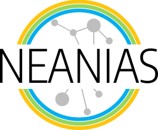![]()
The Atmospheric Perturbations and Components Monitoring service performs all required analytics of atmospheric and meteorological data in order to estimate possible correlations of gaseous and particulate components of the atmosphere with earthquake and volcanic processes.
The objective is to further optimize and validate the existing data from specifically set of meteorological stations in order to determine possible correlations of gaseous and particulate components of the atmosphere with earthquake and volcanic processes. For seismic processes, the correlation will be established by quantifying the variation of a specific gas (i.e., radon) and particulate matter in the lowermost atmosphere before, during and after an earthquake event. This will offer a cutting-edge service to the international fundamental requirement and discussion on the importance and reliability of such gas/particulate variations as earthquake precursors phenomena19. Regarding the volcanic processes, it is of paramount importance to quantify the input of magma-derived products in the atmosphere in the form of gases and ashes. In particular, the front-end of the service will consist of a simple, user-friendly interface that will accept the data and guide the user in obtaining the desired correlations of atmospheric components with the meteorological parameters. It will be possible to upload the data by the user from his/her own database or from an EOSC database or from a linked to EOSC database. A variety of real data/ cases will be employed for service validation progressing from a TRL6 to a TRL8 situation.
